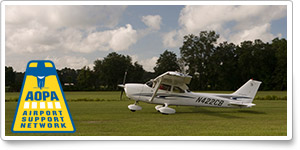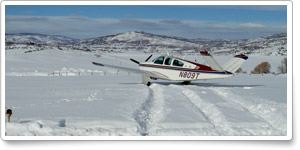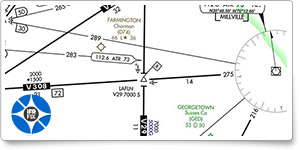| ||||||
| Peaks, grizzlies, tricky approach |
| |||||
| Click here for this week's custom content. |
FeaturedPeaks, grizzlies, a wolf, and a nerve-wracking approach |
GA NewsAircraft diesel engine passes testing milestoneEngineered Propulsion Systems of New Richmond, Wis., announced passing an important technical milestone in its program to bring a diesel engine to market in the general aviation and military unmanned aircraft systems sectors. Tests conducted at Hartzell Propeller showed that its 4.4-liter, “Flat-Vee” Vision 350 engine was “fully capable of achieving propeller durability” in an array of traditional aluminum and composite propellers, “without the need for further engine vibration dampers,” EPS said. Read more >> GAMA issues ‘mixed’ 2012 GA deliveries reportGeneral Aviation Manufacturers Association data for 2012 illustrate a year of flat or slightly declining sales in most segments of the fixed-wing market, with an increase in turboprop deliveries—and new products in the pipeline—suggesting signs of a long-awaited recovery. Read more >> Steamboat airport takes a page from ski resorts IMC Club launches ‘Brown Jacket’ mastery awardMembership in this club is a fashion statement, and a statement of instrument flying proficiency that goes above and beyond the minimum. Read more >> A flying club is bornRetired Air Force officer and Iraq veteran David Miller is hoping that his dream to create a flying club will take off by May. He’s basing the new club at Florida’s Lakeland Linder Regional Airport, also home of Sun ’n Fun. Read more >> Film festival to reopen Air Force Museum theaterA first-of-its-kind aviation film festival will mark the grand reopening of the giant-screen theater of the Air Force Museum at Wright-Patterson Air Force Base in Dayton, Ohio, from April 11 through 14. The First Annual Reel Stuff of Aviation film festival will offer feature films, documentaries, and broadcast programming—each presented by a filmmaker or historian connected with the production. Read more >> New AD addresses fuel-return line chafing in Cessna 172sThe FAA, acting on reports of chafed fuel-return lines in some Cessna 172R and 172S single-engine airplanes, has adopted an AD requiring installation of some support hardware, inspection, and replacement of any damaged fuel-return line assemblies. Read more >> | ||||||||||||||||||||||||||||||||||||||||||||||||||
Flight Instructor Refresher Clinics | Air Safety Institute Safety Seminars | |||||||||
For a complete schedule, see AOPA Online. Can’t make it in person? Sign up for the CFI Refresher Online. |
Topics vary—for details and a complete schedule, see AOPA Online. | |||||||||
ADVOCACY
Across general aviation, ‘sequester’ impacts loom
With a March deadline fast approaching for once-unthinkable automatic federal budget cuts under sequestration, AOPA and the general aviation community are sizing up the possible impact. Could 2,000 controllers lose their jobs? Would more than 200 airports lose their tower? And could it be the end of airshows? Read more >>
Planning paves way to funding airport projects
When construction begins this year on two parallel taxiways at the Columbia Gorge Regional Airport, the activity will mark the latest step in an upbeat development program that is meeting the demands of projected growth head-on. Find out how this airport set projects in motion, and what resources other airports can use to keep development moving ahead and maximize the return on capital investments. Read more >>
RAF visit highlights Arkansas, Arizona issues
With a new victory for backcountry pilots under their belts, two leaders from the Recreational Aviation Foundation joined AOPA President Craig Fuller at the association’s headquarters to talk strategy on more ways to protect remote airports. The RAF’s visit on Feb. 11 occurred on the day that Arkansas Gov. Mike Beebe signed a new recreational-use statute that denotes aviation among other approved recreational activities. Arkansas Rep. Joe Jett (D-Success), an AOPA member and pilot, sponsored the bill in the state House. Read more >>
FAA seeks to better define role of GA airports
In an ongoing study to define the diverse roles of general aviation airports in the country, the FAA has launched a second phase that focuses on categorizing nearly 500 airports that did not fit into one of four classifications. Read more >>
AOPA, EAA highlight medical petition during FAA review
As the FAA reviews a petition from AOPA and the Experimental Aircraft Association that would ease the burden of the third class medical for many pilots, the associations are using every opportunity to bring up the issue in their interactions with the FAA. Read more >>
Join the Airport Support Network today
 Ensuring the health and vitality of your airport is up to you—incompatible development and economic and political pressures can restrict your flying. Every day, close to 2,500 Airport Support Network (ASN) volunteers work with AOPA headquarters to help save their airports, but we need more. Below is a link to a list of the airports where an ASN volunteer could make a difference.
Ensuring the health and vitality of your airport is up to you—incompatible development and economic and political pressures can restrict your flying. Every day, close to 2,500 Airport Support Network (ASN) volunteers work with AOPA headquarters to help save their airports, but we need more. Below is a link to a list of the airports where an ASN volunteer could make a difference.
To nominate yourself or an associate to be a volunteer, visit AOPA Online.
To learn more about the Airport Support Network, visit ASN Online.
 VFR: 50-year-old aviation survival story, lessons for today
VFR: 50-year-old aviation survival story, lessons for today
On Feb. 11, 1963, search-and-rescue airplanes looked along a Canadian stretch of the Alaska Highway for a missing single-engine Howard aircraft. Finding no trace of pilot Ralph Flores and passenger Helen Klaben, they stopped searching after two weeks. But 49 days after their disappearance the two were found—alive. Both had sustained injuries in the crash, so how did they survive? Read more >>
Member Benefits
What the heck is an exculpatory clause?
In the past, when it came to signing agreement releases, the advice was to "sign it and don't worry about it because it will never hold up in court." The law is changing, and more than ever these releases are being enforced. Read more >>
AOPA Career Opportunities
Ever dream of turning your passion for aviation into a career? We’re looking for a credit analyst, major gifts officer, executive assistant, executive assistant, director of outreach and events, and .NET applications developer. To learn more about other AOPA career opportunities, visit AOPA Online.
Community
Picture PerfectAOPA’s online photo gallery allows you to upload your own aviation photography as well as view, rate, and comment on others’ photos. Your favorite aviation images from AOPA Pilot are still available online through this new gallery. Take a look, and submit your own photos! | | |
Engage in AviationCheck out user-submitted events from your region. To include an event or to search all events in the calendar, visit AOPA Online. AOPA does not endorse the events listed below, nor have ePilot editors edited the submissions. AOPA assumes no responsibility for events listed.
| |
| |
QUIZ ME!Here’s a question asked by an AOPA member who contacted our aviation services staff through the AOPA Pilot Information Center. Test your knowledge.
Question: What is minimum vectoring altitude, and is it normally made available to pilots?
Answer: Minimum vectoring altitude (MVA) is the lowest altitude, expressed in feet mean sea level (msl), to which a radar controller may issue aircraft altitude clearances during vectoring/direct routing except if otherwise authorized for radar approaches, departures, and missed approaches. These altitudes are established for use by ATC when radar ATC is exercised. The minimum vectoring altitude provides 1,000 feet of clearance above the highest obstacle in nonmountainous areas and 2,000 feet above the highest obstacle in designated mountainous areas. Because of the ability to isolate specific obstacles, some MVAs may be lower than minimum en route altitudes (MEAs), minimum obstruction clearance altitudes (MOCAs), or other minimum altitudes depicted on charts for a given location. While being radar vectored, IFR altitude assignments by ATC are normally at or above the MVA. Controllers use MVAs only when they are assured an adequate radar return is being received from the aircraft. Charts depicting minimum vectoring altitudes are normally available to controllers but not available to pilots. Situational awareness is always important. For more information, please see the AIM 5-4-5, Instrument Procedures Handbook , and FAA Order JO 7210.3X.
Got a question for our aviation services staff? The AOPA Pilot Information Center is a service available to all members as part of the annual dues. Call 800/USA-AOPA (800/872-2672), or email to [email protected]. |
| | |
| |
| | ||||
| ePilot Editor: | Contributors: | | Production Team: | Advertise in ePilot: |
| Member Tools: Send feedback | ePilot Archive © 2013 Aircraft Owners and Pilots Association | 421 Aviation Way Frederick, MD 21701 | Phone 800/USA-AOPA | Fax 301/695-2375 | ||||










